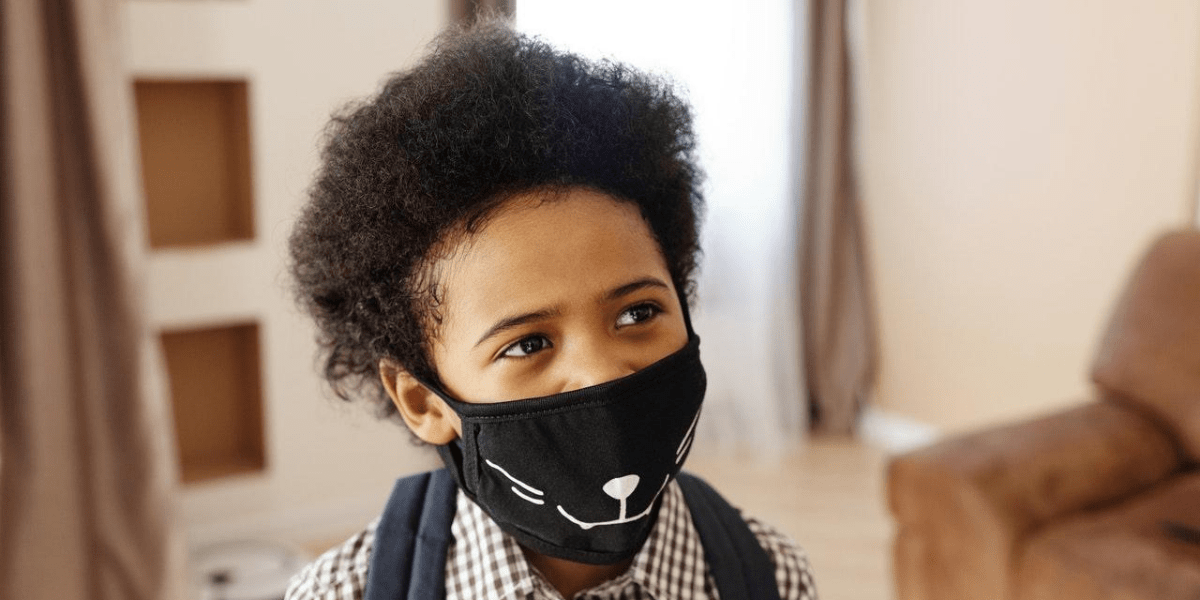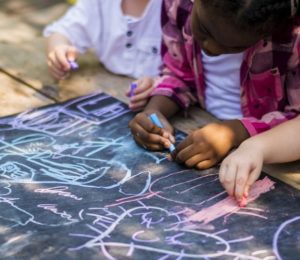September is just around the corner. And while most school boards across Ontario have delayed start days to as late as September 14th, the start of school is approaching. It’s definitely time for those of us who are sending our kids to class in-person to think about how we talk to our kids about school.
The good news is that they have spent the last 7 months learning about COVID-19, masks, and proper hygiene. But that doesn’t necessarily mean that they are going to be ready for everything a new school year is going to throw at them—especially depending on their age.
So let’s talk about the 6 things you can do to help prepare your kids for in-person schooling.
Stay on the sunny side
As parents, we have been through it over the last 7 months. The looming school year hasn’t done much to assuage our stress and anxiety. But it is important to remember that our kids look to us to determine who to react to things. And let’s be honest, no matter what age your kids are, they are always listening.
Even if you’re furious that class sizes have stayed the same or that your child will need to wear a mask all day, don’t let these negative thoughts make their way into the ears of your little ones.
Instead, be positive when you speak about back-school—even if you aren’t speaking directly to your kids. Remind them of all the things they’ve missed and will get to experience again once they are back to school. Do your best to make this a positive experience for them.
Also, make them part of the conversation—let them ask questions, offer their opinions, and let them share any concerns that they may have.
Get them onboard with masks
The Ontario government has made an official statement on kids wearing masks in school:
“Students in Grades 4 to 12 will be required to wear non-medical or cloth masks indoors in school, including in hallways and during classes. Students in kindergarten to Grade 3 will be encouraged, but not required, to wear masks in indoor spaces.”
While your younger kids are not required to wear masks, it is still a good idea to have your kids wear a mask if possible.
If you haven’t already started to normalize mask use, now’s the time. Try getting kids to wear them for small increments of time and increase it each day. Have them put masks on their favourite toys. Let them pick out their own style and pattern of masks.
When it comes to school, be sure to send your child with more than one mask per day—they should have a clean mask to put on after eating and at least one extra in case it gets lost or dirty. Let them know where to put their “dirty” masks—it’s a good idea to give them a Ziploc bag for this purpose. Make sure you label each mask and enforce the importance of not sharing their masks with friends.
Self-screen each day
Schools have left it up to the parents to screen for symptoms before kids come to school each day. They have not given any clear guidelines on what is considered self-screening.
It’s important that we let our kids know that if they are feeling even the slightest bit unwell, they need to tell us. Reinforce that it is not bad to be sick, they will not be in trouble, but that it is extremely important to let you know if they have a headache, a scratchy throat, or have noticed a cough.
You can also conduct your own temperature checks each morning—this obviously isn’t mandatory and isn’t a foolproof solution but it will give you some peace of mind.
Practice washing their hands
We’ve had 7 months to teach the importance of proper hand washing—this is great! But before your kids head back to school, it’s a good idea to review and practise proper hand washing techniques.
Depending on the age of your child or children, you could even use washable markers or paint to help them really understand how to properly wash their hands. It’s also a great idea to pick a song to sing while washing your hands—Happy Birthday and the ABCs are both the perfect length of time for hand washing.
And if your kids are a bit older, you can have them pick a few lines from their favourite song.
Remember to talk about why washing their hands is important and the most important times to wash their hands.
You can even send them to school with a small, personal bottle of hand sanitizer for any times they can’t get to a sink.
Keep 6 feet apart
Physical distancing may be one of the hardest parts of going back to school—our kids haven’t seen their friends in months and it’s natural for them to want to play as they did in the past.
Try to explain to them that just because we can’t hug our friends or play tag like we used to, doesn’t mean they can’t have fun with their friends. We just have to change the way we play to ensure we all stay healthy.
Go over what is considered appropriate physical distancing with them—6 feet apart—and also talk to them about what would be considered inappropriate physical distancing.
When they come home
Every family will choose a different way to approach kids coming home from school. At the very least, kids should be required to wash their hands when they get home. You may also choose to have them sanitize their hands before they enter the house. We know some parents are requiring them to shower as soon as they arrive home.
Whatever you and your family choose to do, make sure that your after-school strategy is solidified, shared, and practised with your kids before the first day of school rolls around.




